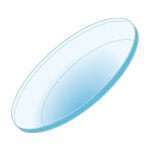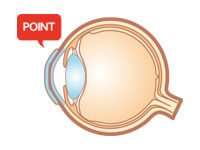
Table of Contents
- 1 Flow of orthokeratology treatment
- 1.1 Key steps for successful treatment
- 2 Initial consultation
- 2.1 Initial consultation process
- 3 Delivery of lenses
- 4 Regular checkups
- 4.1 Importance of regular checkups
Flow of Orthokeratology Treatment
Key steps for successful treatment
For effective orthokeratology treatment, it is crucial to follow daily usage instructions carefully. Neglecting proper lens care or not adhering to the prescribed guidelines can lead to problems similar to those caused by regular contact lenses.
Orthokeratology lenses are medical devices that require expertise and experience to prescribe correctly. As such, an ophthalmologist or optometrist is responsible for prescribing and overseeing the appropriate treatment. Proper lens care under the guidance of an ophthalmologist or optometrist is important for successful orthokeratology treatment. Even after you start using orthokeratology lenses, regular checkups at your ophthalmologist or clinic are essential.

Lens design
The lens is worn directly on the cornea and must be selected based on the individual shape of the user’s cornea

Material
The softness and crack resistance are key factors in ensuring durability and comfort

Oxygen permeability
A lens that allows oxygen to pass through more easily is safe for overnight wear
Initial Consultation
Initial consultation process (typical example)
(1) Explanation of treatment
(2) Adaptive testing
(3) Selection of trial lenses
- Refraction test: measures the eye’s refractive errors to determine the prescription
- Visual acuity test: assesses how well the patient can see at various distances.
- Corneal shape test: examines the shape and curvature of the cornea, which is crucial for fitting orthokeratology lenses
Note: please contact your ophthalmologist or optometrist for more specific consultation detail
(4) Trying on the lenses
The patient is asked to wear the trial lenses for a set period and to rest with their eyes closed for 15 minutes to an hour. The ophthalmologist or optometrist will then monitor how the lenses affect the patient’s vision and comfort.
(5)Lens prescription
Delivery of lenses
(1) Checking lens fit
(2) Practice wearing of lenses
- lean and inspect the lenses before use. Apply a few drops of lubricating eye drops inside each lens.
- Look down and then straight ahead at a mirror to align both eyes. Gently insert the lens so it lightly presses against the cornea.
- Close your eyes for a few seconds, then look up and blink slowly to ensure the lens is positioned comfortably.
Note: Always clean and store the lenses according to the handling guidelines for the recommended care products. Carefully check both the lenses and your eyes for any abnormalities before wearing.
(3) Delivery of lenses
Regular checkups
After you receive your orthokeratology lenses, regular checkups are essential to ensure optimal results and monitor eye health. The typical checkup schedule is as follows:
Next day
1 week later
2 weeks later
1 month later
3 months later
Every 3 months thereafter
Please note that the frequency of checkups may vary depending on your eye condition and the policies of your clinic. Be sure to contact your local clinic for specific details.
Importance of regular checkups
Periodic examinations are crucial for ensuring comfortable lens wear, as they include thorough eye examinations and confirmation of proper lens handling techniques.
Even if you follow all the guidelines for wearing your lenses, you may still be unknowingly putting stress on your eyes or lenses. That is why it is essential to attend regular checkups with your ophthalmologist or optometrist as recommended.
If you experience sudden changes in your vision or notice any unusual symptoms, stop using your lenses immediately and consult your ophthalmologist, even if it is not time for your next scheduled checkup.
If you have any concerns about your eyes or lenses, don’t hesitate to reach out to your ophthalmologist or optician outside the regular checkup schedule. Your eye health is important, and it is always better to be safe than sorry.
